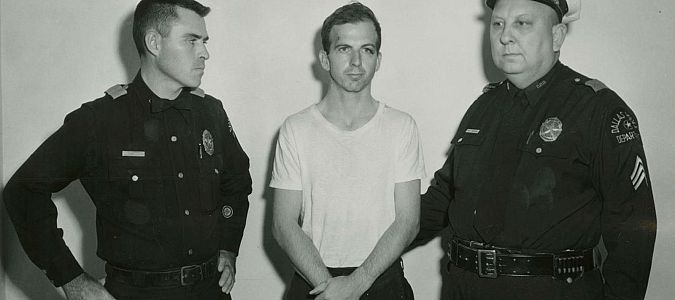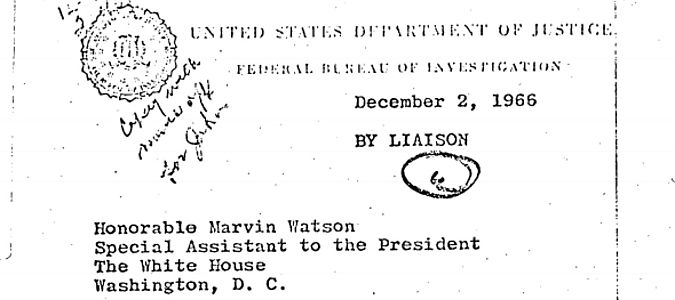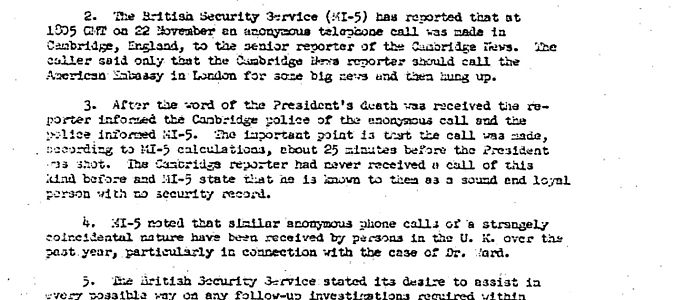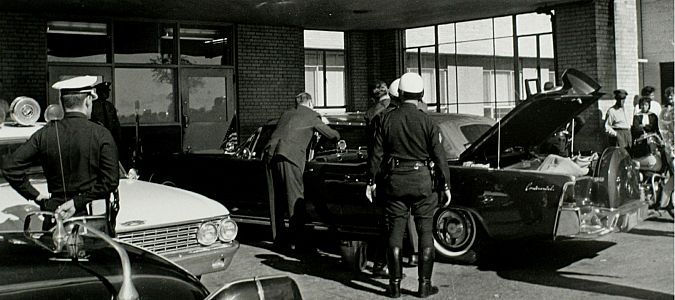From bizarre Castro assassination plots, to Soviet conspiracy theories and Hollywood sex parties
The US National Archives has published some 2,800 previously sealed or censored documents related to the 1963 assassination of former president John F. Kennedy.
The release was made under a 1992 law, which requires documents linked to the case to be opened within 25 years unless the president objects on national security grounds.
Kennedy was shot dead on November 22, 1963, in Dallas, Texas.
He was allegedly killed by former US marine, Lee Harvey Oswald, whose motive remains unclear. Oswald never stood trial and was shot dead two days after his arrest by local nightclub owner Jack Ruby, who was convicted and sentenced to death but died of cancer in 1967.
Kennedy’s assassination has been the subject of numerous movies, books and conspiracy theories.
But what have we learned so far from the latest release?
1. Hundreds of documents withheld
US President Donald Trump agreed to postpone the release of hundreds more files that were supposed to be made public, pending a public review that is due to end by April 26.
In a memorandum released by the White House, Trump said he had “no choice… but to accept those redactions rather than allow potentially irreversible harm to our Nation’s security.”
Following the release, Trump said on Twitter that he hoped to get “just about everything” public in the end.
JFK Files are being carefully released. In the end there will be great transparency. It is my hope to get just about everything to public!
— Donald J. Trump (@realDonaldTrump) October 27, 2017
2. FBI had warning of potential death threat to Oswald
A memo written by FBI director J. Edgar Hoover says the intelligence agency had warning of a potential death threat to Oswald, who was in police custody at that time.
“There is nothing further on the Oswald case except that he is dead,” he wrote on November 24, 1963.
“Last night we received a call in our Dallas office from a man talking in a calm voice and saying he was a member of a committee organized to kill Oswald.
“We at once notified the chief of police and he assured us Oswald would be given sufficient protection. This morning we called the chief of police again warning of the possibility of some effort against Oswald and again he assured us adequate protection would be given. However, this was not done.”

3. Hoover feared conspiracy theories
In the same memo Hoover expressed fears that people wouldn’t believe that Oswald was the real killer.
“The thing I am concerned about is having something issued so that we can convince the public that Oswald is the real assassin,” he wrote.
4. Bizarre CIA plots to kill Castro
The CIA masterminded several bizarre schemes to kill Cuban leader Fidel Castro, which included “contact with organized criminal elements.”
“Among the means considered were poison, botulism pills, and the use of Cuban exile groups,” according to one of the documents.
Other plans included a contaminated skindiving (freediving) suit and exploding seashells.
“The CIA plan was to dust the inside of the suit with a fungus producing madera foot, a disabling and chronic skin disease, and also contaminating the suit with tuberculosis bacilli in the breathing apparatus,” a file reads.
“There were also discussions about preparing a boob-trap spectacular seashell which would be submerged in an area where Castro often skindived.”
5. Cuban ambassador reacted with “happy delight”
Cuba has insisted it had nothing to do with the assassination, but shortly after it happened a CIA memo says Cuban ambassador Cruz and his staff acted with “happy delight”.
“Ambassador Cruz received cable, which ordered ambassador and his staff to govern their actions by official attitude of govt to which they accredited. Cruz thereupon issued instructions to his staff and to Cuban consulates and trade office Toronto and Montreal to ‘cease looking happy in public’,” the memo says.
6. Kremlin suspected LBJ was behind assassination
The Soviet Union had a number of theories about JFK’s assassination, including suspicions that President Lyndon B. Johnson could have been behind it, according to a memo from FBI director J. Edgar Hoover to the White House more than three years after Kennedy’s death.
The document said Soviet officials had believed there “was some well-organized conspiracy on the part of the ‘ultraright’ in the United States to effect a ‘coup’.”
“The assassination was not the deed of one man, but … arose out of a carefully planned campaign in which several people played a part,” it added.
A source also told the FBI that the KGB was in possession “of data purporting to indicate President Johnson was responsible for the assassination of the late President John F. Kennedy.”

7. Soviets considered Oswald “neurotic maniac”
In the same document, Soviet officials described Oswald as a “neurotic maniac who was disloyal to his country and everything else.”
“Soviet officials claimed that Lee Harvey Oswald had no connection whatsoever with the Soviet Union… They noted that Oswald never belonged to any organization in the Soviet Union and was never given Soviet citizenship.”
8. Oswald spoke to member of KGB assassination unit
Oswald spoke to “an identified KGB officer” in Mexico City in September 1963, according to a CIA memo.
In the phone call, which came some two months before Kennedy’s assassination, Oswald identified himself by name and spoke in broken Russian as he asked Valeriy Vladimirovich Kostikov whether there was “anything new concerning the telegram in Washington.”
The memo notes that Kostikov is a member of Department 13, a unit “responsible for sabotage and assassination.”
9. British newspaper received anonymous call just before assassination
A reporter on Britain’s Cambridge Evening News received an anonymous call 25 minutes before JFK’s assassination telling them to ring the US embassy for some “big news”, according to a memo written to the director of the FBI by the deputy director (Plans) of the CIA.
“The British security service (MI-5) has reported that at 18:05 GMT on 22nd November an anonymous telephone call was made in Cambridge, England, to the senior reporter of the Cambridge News.
“The caller said only that the Cambridge News reporter should call the American embassy in London for some big news and then hung up,” the memo reads.
“The important point is that the call was made according to MI-5 calculations, about 25 minutes before the president was shot. The Cambridge reporter had never received a call of this kind before and MI-5 state that he is known to them as a sound and loyal person with no security record.”

10. FBI were trying to track Oswald before assassination
The FBI was already trying to track Oswald in October 1963, according to memos by the agency’s New Orleans division.
An agent wrote that Oswald was of interest according to “Cuban sources”, and that the information had been forwarded on to Dallas authorities.
11. CIA assassination plots
Included in the release is a long report on CIA assassination plots and programmes, and scores of receipts and bookkeeping that amount to hundreds of thousands of dollars on covert operations in Cuba, Vietnam and the Dominican Republic.
12. Hollywood sex parties’
An FBI document refers to a “high-priced Hollywood call girl” who was a close friend of Los Angeles private detective Fred Otash who had been convicted of “horse race fixing”.
The woman contacted members of the FBI’s Los Angeles field office and told them that Otash had asked her about her “participation in sex parties” with JFK, his brother-in-law Peter Lawford, Frank Sinatra and Sammy Davis Jr. She said she didn’t know about any such parties.
Otash later implied to FBI agents that “Confidential” magazine was “looking for dirt on Kennedy or Lawford” for a series of articles before the 1960 election.












